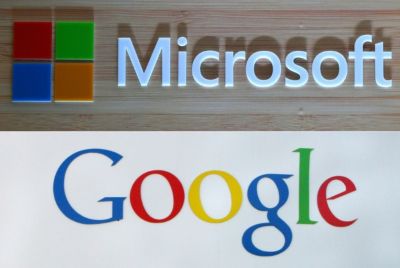OpenAI working on an advanced AI model that uses 10 million NVIDIA GPUs
OpenAI's latest GPT-4 model is based on several thousands of AI GPUs from NVIDIA.

If rumours making the rounds online are anything to go by, OpenAI is working on an advanced AI model that draws its power from 10 million NVIDIA GPUs. Both software and hardware companies are sparing no effort to dominate the AI space.
With iOS as well as Android versions of ChatGPT now available for download, OpenAI is currently at the forefront of the artificial intelligence segment. Likewise, Google, Microsoft, and Baidu have also joined the race for AI supremacy.
Understandably, OpenAI is leaving no stone unturned in a bid to retain its top spot. In line with this, the American AI company is working on a new and power-packed AI model. Reportedly, this robust AI model combines millions of NVIDIA GPUs together.
OpenAI teams up with NVIDIA
While there's no dearth of ChatGPT alternatives, a report from Zapier suggests ChatGPT is still the best AI chatbot in 2023. In fact, a new study found that ChatGPT is more creative than 99 per cent of humans. Now, the company behind the widely popular chatbot is teaming up with NVIDIA to build a powerful AI model.
NVIDIA is known for making graphics cards for computers. However, the Santa Clara, California-based technology company does much more than that. Notably, NVIDIA has been working on AI for a while now. The company is also developing technologies for the AI segment.
The simplest example of this is the DLSS feature in RTX GPUs. Unsurprisingly, a myriad of leading companies like OpenAI adopt NVIDIA technologies to power their own AI models. Chinese entrepreneur, Wang Xiaochuan, who is the founder of Internet search engine, Sogou Inc., has shed some light on OpenAI's future plans.
China wants to join and lead the AI race
According to the folks at WCCFtech, Xiaochuan confirmed that OpenAI is working on a more advanced AI computing model which is based on considerably more advanced training methods. Reportedly, this model will have an impressive capacity to connect 10 million AI GPUs together. It is worth noting that reaching even 100,000 GPUs is an arduous task.
Xiaochuan recently invested in a new intelligence firm called Baichuan Intelligence, which aims to be the top OpenAI alternative in China. As part of its efforts, the company has released its Baichuan-13B language model that draws its power from consumer-level hardware like an NVIDIA GeForce RTX 3090 GPU.
Currently, OpenAI is dominating the AI segment and is likely to remain a dominant force in the future after its collaboration with NVIDIA. So, Xiaochuan claims China needs an OpenAI of its own. Nevertheless, ten million AI GPUs powering OpenAI's upcoming language models sound way too ambitious in terms of scale.
NVIDIA is capable of only producing a million AI GPUs at the moment. So, it is safe to assume that it will take ten years for the massive project to be completed. NVIDIA has teamed up with TSMC to increase supply. However, other factors like cost and power could become hurdles. Also, interconnecting such a massive amount of GPUs together won't be a walk in the park.
The data shared by Tom's Hardware shows that NVIDIA managed to sell 30.34 million GPUs last year. These are just retail units the company sold to end users, but they give us an idea of how enormous 10 million graphics cards are. Also, if the speculation turns out to be true, there might be a GPU stock shortage similar to the one we saw during the pandemic.
Moreover, it will be interesting to see whether OpenAI will afford such a high cost. Regrettably, we will have to wait for a long time to see if this rumour is true. In the meantime, the AI company has announced the end of its AI classifier as of July 20th via a blog post.
"We are working to incorporate feedback and are currently researching more effective provenance techniques for text," OpenAI said.
© Copyright IBTimes 2025. All rights reserved.






















